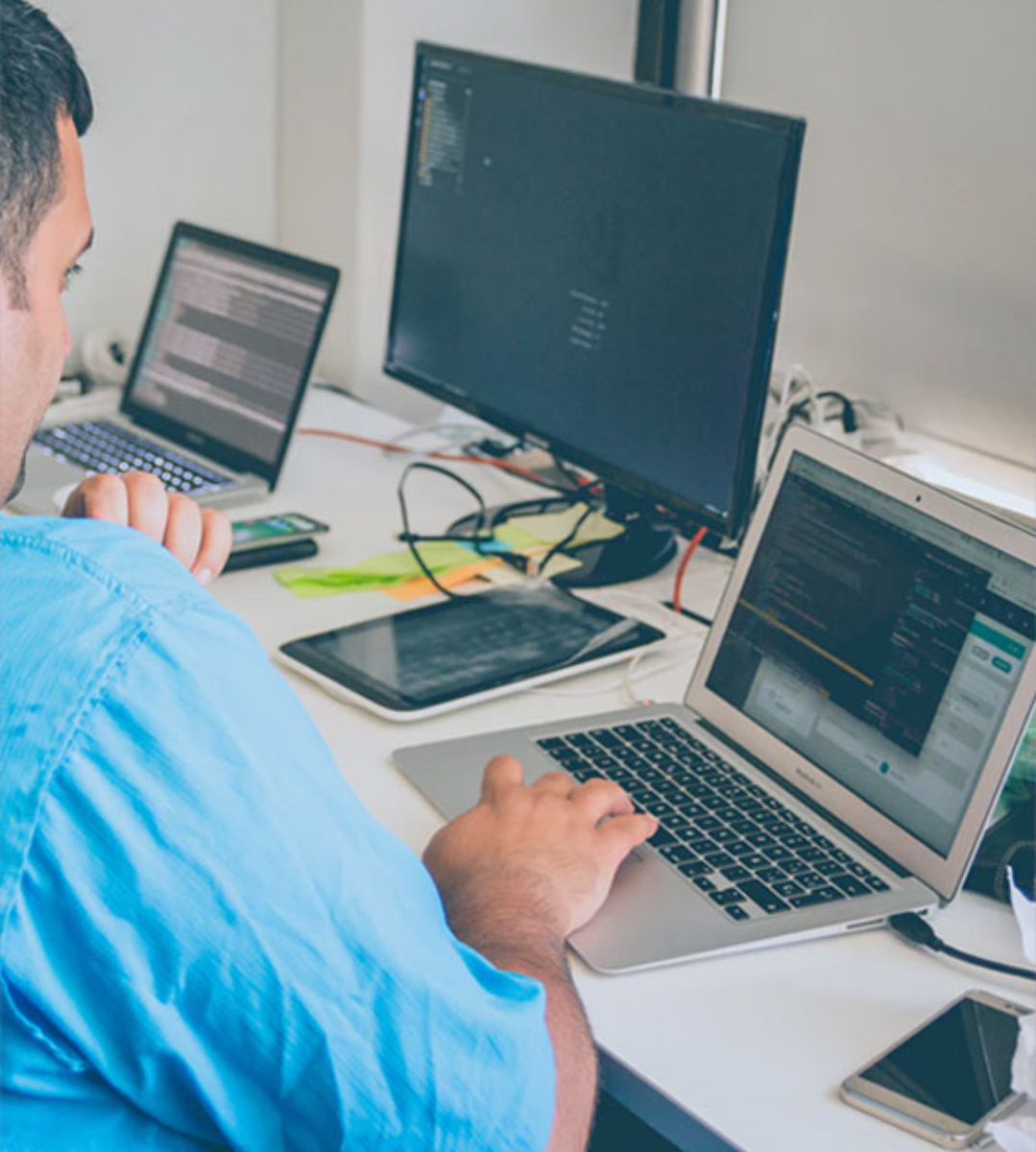Security by Design Is a Game Changer- Here’s Why

It is no secret that much of our lives, both personal and professional, are becoming increasingly dependent on technology by the day. But if we focus on the professional side, recent years have shown that establishing a strong, personalized digital presence is no longer optional for any company, which means that nearly every successful business has stepped foot into the online game.
In this era of ‘digital transformation’, cyber security is more important than ever before. While hackers and cybercriminals have existed since the dawn of the first computer, it cannot be denied that with technology pervading every aspect of our lives, cybercrimes and digital security risks are at an all-time high.
Recent studies have shown that with the ongoing Covid 19 pandemic, there has been a significant rise in phishing attacks using the coronavirus theme, along with the FBI detailing a whopping 300% increase in cybercrimes in the United States in 2020. As companies have shifted to remote work, their systems and information are more vulnerable and susceptible to data stealing, malware and cyber-attacks of all kinds. If that isn’t alarming enough, cybercrime is also expected to cost the world a stupendous $6 trillion by the end of 2021 alone.
These numbers are clear indicators that with the rise of technology, security in design is a bigger concern than ever before. So what exactly is “security by design”? And why is it relevant today? In this article, we answer these questions and more, alongside detailing ways in which your organization can adopt security by design into your systems and ensure you stay protected from data breaches and cyber-attacks.
What Is Security By Design?
Let’s say that you lock your phone with a simple password, perhaps your name, because you usually have a hard time trying to recall your passwords. All is going well for you, until one day, a coworker manages to crack your super simple password and gain access to your mobile phone. At this point, you become aware that your security is not up to the mark and decide to change your password to something more complicated.
This hypothetical situation represents how most traditional ‘reactive’ security systems work. Security is upgraded, strengthened and changed once the owner of the system becomes aware of either an attempted or successful breach in their system, and heightens security measures as a response to that breach. But what if you had selected a difficult password from the get-go, and your coworker hadn’t been able to guess it in the first place? That is where the concept of security by design comes in.
Security by design is an approach to cyber security that centres security in the developmental process. It allows organizations to automate their security controls and design a system with security already built-in. This philosophy aims to prevent cyber breaches as much as possible, rather than only strengthening security or repairing systems once they have already been broken into. Following this approach, software developers will design the system such that it is secure from the onset, greatly reducing the likelihood of potential cyber-attacks.
Why Design Is Important To Security
Security by design is important because it helps to identify and minimize risks as a fundamental part of the design and developmental cycle. As software is developed, it becomes increasingly difficult to add security upgrades and to address and minimize vulnerabilities in the system in real-time. No matter how quickly and efficiently the developer is able to identify and address cracks in the system once the software has been released, this method will never be as efficient as ensuring that the software was as secure as it could be from the very beginning. Security by design helps counter this problem by keeping security in mind from the get-go.

Security by design has many benefits, some of which are discussed below.
- A well-adopted security by design system not only helps alleviate risks but also cuts down on costs greatly. Solving security issues at the beginning is much cheaper than implementing large-scale changes at later stages, where budget constraints and time limitations are at their peak.
- It helps build a more resilient and tight security system, as the software has been designed keeping security at the front, and not as last-minute rushed additions.
- Flaws in security can be identified and removed at an earlier stage, making the security by design system more efficient at countering risks as compared to security after the fact, where risk assessment is performed after development is already complete.
- As errors are identified early on, there is greater scope for the development process to be altered, improved and adapted to help prevent similar errors in the future. Thus a security by design system also encourages greater collaboration between the development and IT operations departments.
How You Can Adopt Security By Design
The idea of continuous development forms the basis for security by design. It’s an approach centred on the age-old adage ‘better safe than sorry’- security by design ensures that you not only start off strong by having a superior security system in place but also continue to improve, update and develop with time.
In order to apply the security by design philosophy at a practical level, businesses must be prepared for consistent evaluation and improvement. They must regularly test their old systems, identify possible flaws and then build software with the aim to solve them. With the security by design approach, the sooner vulnerabilities are detected, the faster they can be resolved.
When setting up security by design, it’s important to recognize that achieving a 100% infallible system is not only impossible but also not what you should aim to do. When implementing this mindset at the developmental level, you should instead focus on giving programmers an environment where they make fewer mistakes, and use security by design to ensure that any errors made are quickly identified and fixed.
Below are some of the best practices you should follow in order to set up security by design.
-
Build Using Familiar & Trusted Technology
Although this sounds like a no-brainer, it’s surprising how many businesses are willing to take major risks simply to try out the freshest technologies in the market. It is extremely important to build using technologies that you are familiar with and that have survived the test of time. Trusted technology doesn’t mean old or outdated technology that might no longer serve its purpose- it simply means technology that is built on transparency and openness and that your business has found to be efficient and trustworthy.
Most modern programming environments are perfectly capable of providing you with a strong security baseline, provided that you choose them correctly. Security by design begins with choosing the right technology, so you are likely to perform well with a trusted technology whose owners are open about their safety procedures and one that your team is familiar with.
-
Embrace Automation
Making use of automated vulnerability scanning as part of your software development process can work wonders in maximizing security in your software. It not only minimizes tiring and mindless manual work for your team but also works well to identify risks accurately and on time. Automation can go a long way in minimizing risks that can compromise your security, and is an overall good practice to follow when adopting security by design.
-
Train Your Team
Once you’ve got your hands on the right tools, you need to make sure those tools are being used by good hands. High-end technology is of no use if you do not have a skilled, experienced and dedicated security team to use it to its fullest potential.
Security is regarded as a shared responsibility and team effort, and it is therefore extremely vital that you are providing your team with the knowledge, training and equipment they need to fully embrace the security by design approach. Make sure you regularly communicate with your team, fill them in on their responsibilities and provide them with all-around training on security concepts, procedures, risk assessment and requirements. A team of developers with greater insight on the latest security threats and vulnerabilities will be able to design software more carefully, ultimately yielding better results.
-
Create Awareness
Establishing a holistic, collaborative and transparent company culture weighs heavily on a business’s success with implementing security by design. It’s important that you begin with clarifying business security expectations and clearly communicating company policies, procedures and standards. Involving your team of developers in all security updates or discussions and establishing an open communication channel is a major step towards the security by design principle, and is generally a good business practice to implement. If your team are all on the same page and working towards a united goal with a thorough understanding of the shared company aim, the final product is likely to turn out much better.
-
Strong Monitoring Is A Must
No matter how skilled your team is and how upgraded your security systems are, there is always a risk of breaching and of cybercriminals possessing better technology than you. This doesn’t mean that your systems are a complete failure, but it is possible to minimize the risk of such incidents by putting proper security monitoring systems in place.
As touched upon earlier, it isn’t enough to simply set up a strong security base- you must review and monitor it, and respond quickly to any changes or weaknesses you identify. You can make use of SIEM and other similar security tools to regularly monitor your system, identify any risks and immediately notify all concerned parties.
-
Expand
Once you’ve got a good security by design system going, you can also further expand to include privacy by design. Privacy by design refers to building software such that it centres privacy and correct handling of personal or sensitive data. You can develop your security by design system to also incorporate privacy by design if you wish to take your organization’s security practices to the next level.
-
Review, Update & Improve
In order to successfully implement and benefit off of the security by design system, consistent reevaluation of your team, workplace culture, tools and systems is extremely important. As technology is ever-evolving, cyber threats and security landscapes are also continuously changing, which means that you cannot set up a strong system initially and then expect it to last you forever.
Your business should always stay up to date with the latest cyber threats and how to mitigate them, and regularly review your tools and procedures to ensure you are doing the job right. Without continuous improvement and assessment, you will not be able to keep up with the changing security landscapes, and will end up compromising your business’s integrity and privacy along the way.
Why You Should Care About Security By Design
The EY Global Information Security Survey 2020 revealed that around 65% of businesses consider cyber security when it’s already too late. There is a clear tendency to rely on the ‘reactive’ security approach where security is implemented almost as an afterthought, once an attack has already occurred or a flaw identified. This is not only inefficient but also highly risky and can lead to businesses losing large amounts of precious data to petty malware and brute force attacks. The average cost of a malware attack on a company is estimated to be $2.4 million, which puts into perspective the extent of the losses companies can suffer when treating security as a last-minute decision.
With security by design, it is not only easier to implement security checks as you go along, but it also results in a more robust and efficient security system, making it an all-round more practical, safer and better approach to security. This is precisely why security by design is regarded as such a game-changer and a more necessary approach to adopt than ever before.
Have any questions? MPire can help! Or if you’re looking to hire an expert team of developers for your business, reach out to us now for a free consultation!
If you enjoyed this article, you can read more of our tech-related blogs at https://mpiresolutions.com/blog/.




